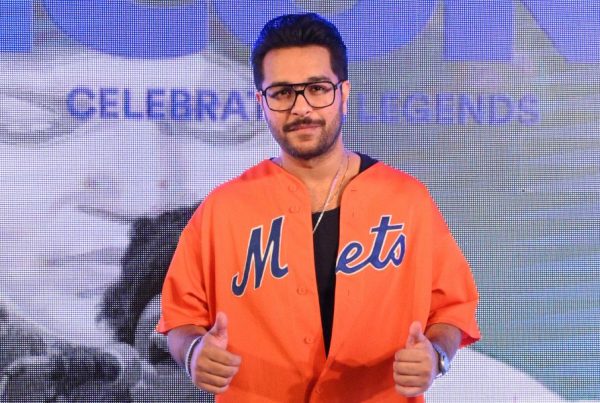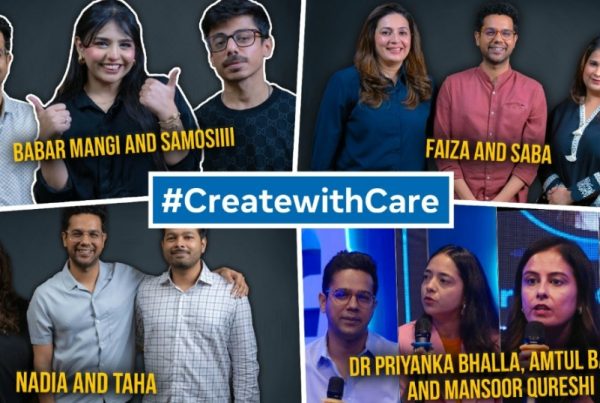2500 girls and boys, men and women of various generations stood shoulder to shoulder, unperturbed by the proximity, jumping in coordination as new sensation Shamoon Ismail pelted out his top hits and relentless superstars, Strings, skimmed over 30 years of award winning archives. A Salt Arts presentation, the evening titled Na Kaam Ishq Ke Naam featured ‘heartbreak heroes’ Strings and Shamoon Ismail together for the first time and the combination was “dopeâ€, as the millennials would put it. Let’s just call it marijuana.
One is tempted to jump straight into the dynamic of why this Salt Arts concert in Karachi faced none of the trouble that was recently witnessed at Solis in Islamabad but let’s just soak in the success of the evening first. It was dynamic, enthralling to say the least. Many people missed the start of the concert because it began on time (an unexpected phenomenon for most), but then the crowd at Beach Luxury Hotel continued to build strong as Shamoon Ismail took to stage. By the time Strings came on, around 9pm, there were around 2500 people standing in eager anticipation for more music magic.
https://www.instagram.com/p/B888l5RH2BO/?utm_source=ig_web_copy_link
We speak of music connecting people but this was one step up; this was music connecting people across generations. It was unbelievable to see the crowd singing every verse and lyric of Shamoon’s ‘Rung’ as well as Strings’ ‘Raat Shabnami’; they warmed up just as fluidly to ‘Sar Kiye Ye Pahaar’, the Strings anthem that released in 1992. That’s 28 years ago, when most of this audience was not even born. That, I would say, is the power of music.
The power comes from respect; respect for art, for the fellow artist and of course, for the audience. Shamoon didn’t leave when his set ended and Strings took to stage. He stayed on and heard the concert through to the end. Strings acknowledged the rising star’s fandom and success, inviting him to sing with them on their Spiderman II track, ‘Na Jaane Kyun’. The success was in the symphony of having artists that respected each other, an audience that respected the music and its platform and the pleasure of curating it was evident on Salt Arts founder, Raania Durrani’s face as she constantly patrolled the venue, ensuring smooth operations.
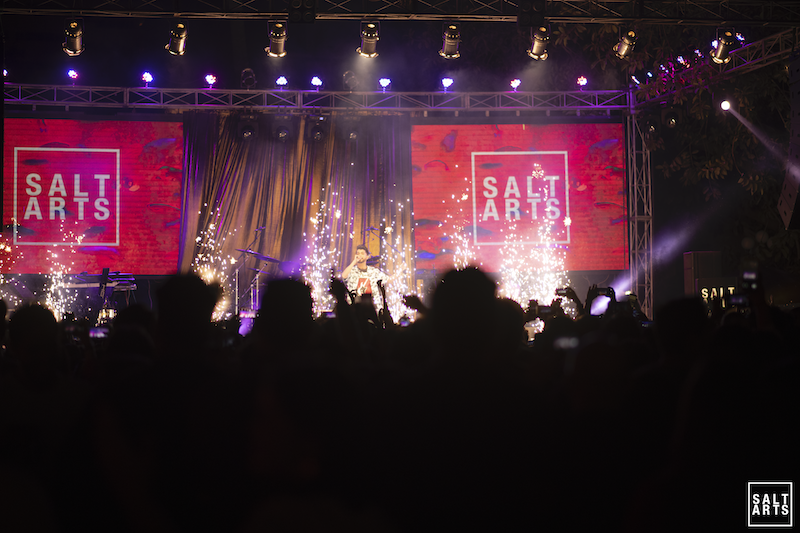
It was amazing to see the crowd enjoying Shamoon Ismail as much as Strings; there was no generation gap that night!
How, despite there being a crowd of around 2500 people, did Salt Arts ensure nothing untoward happened? I got hold of Raania, after the show, to talk about it.
“I am committed to audience development and now at the five year mark of Salt Arts, scalable social impact is the goal,†she explained. “Concert grounds are not meant to be segregated, militarised war zones; they are infact spaces of joy, social cohesion, unity and integration.
“As a creative producer and an interdisciplinary artist, making this impact visible within the limitations of a conflict zone calls for quiet determination and committed teams who know that the win is in consistent restraint. We wish to slowly chip away and make sustainable change for audiences across generations.â€
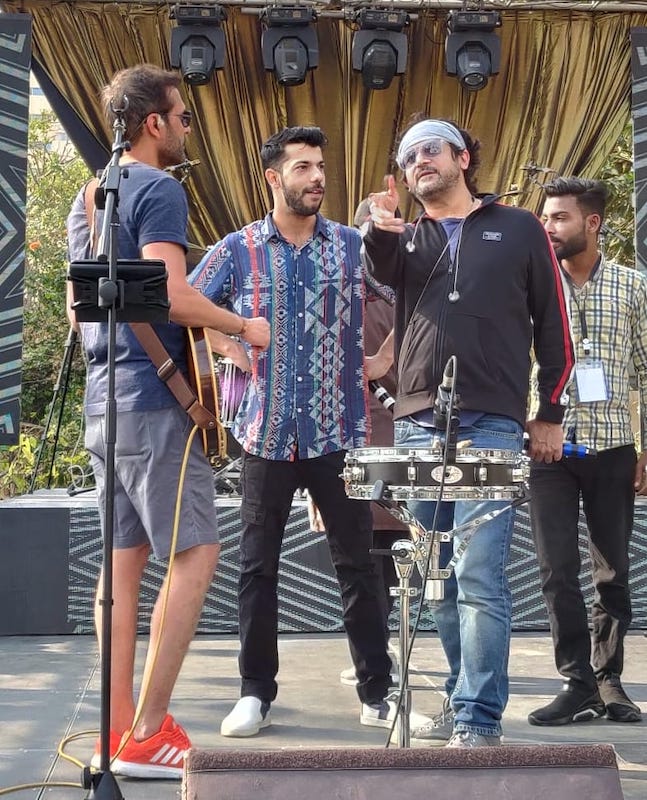
The committed team Raania talks about was 150 individuals determined to ensure an unperturbed evening. There was a sense of ownership that people felt; even one of the bouncers at the entrance proudly shared how personally he took the safety of the people inside.
Going back to the star performers of the night, I was also eager to know how and why Salt Arts came up with the idea of bringing Strings and Shamoon Ismail together. One would have thought they had completely different audiences.
“To me, as a curator, Strings and Shamoon together sends out a message of artistic unity, mentorship, kindness and oneness,†she replied. “Two generations, of music so diverse, coming together to perform for one audience, and what a top audience it was, means that curatorial intervention is key. We are all part of one eco system: the road map makers, the listeners, the technical teams and the artists. Together we stand, and here too borrowing from our friends at Lahooti, ‘eco not ego’, makes sense, however in a slightly different context.â€
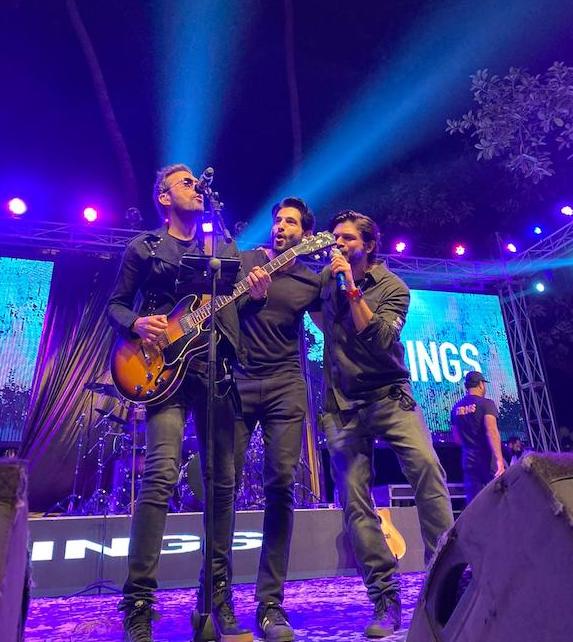
Strings with Bilal Ashraf
There definitely was a sense of togetherness that evening. There was a moment when the audience broke into song in chorus, waiting for Shamoon Ismail to begin. There was a moment when Strings were performing and called Shamoon to join them. Cricket came up, as PSL fever is burning high these days, and Strings invited Bilal Ashraf – a diehard fan enjoying the concert backstage – to join them onstage and umpire an over that Faisal Kapadia bowled to Bilal Maqsood. Six lucky fans must have walked home with tennis balls shot into the audience. It was all extremely interactive and on popular demand, Strings did play the Cricket World Cup anthem they produced in 2003.
“We see artists as vehicles of social messaging and ambassadors of goodness,†Raania commented, conclusively. “This show was curated with a strong sense of the audience, the Nakaam Ishq campaign was about self worth, self discovery; it was about being free to love life and all its beautiful moments. It was about being one, but also about collective power of togetherness.â€
- This article was first published in Instep on February 25, 2020

